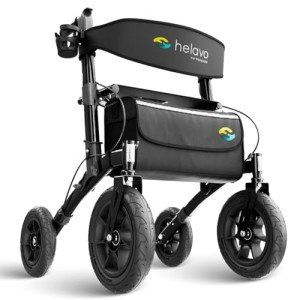Understanding Mobility Assistance: A Comprehensive Guide
In an increasingly active world, mobility assistance has actually ended up being important for lots of people. Whether due to age, injury, or persistent health problem, mobility challenges can considerably affect life. My Mobility Scooters digs into the various forms of mobility assistance, their benefits, and practical factors to consider for those looking for help.
What is Mobility Assistance?
Mobility assistance incorporates a variety of services, gadgets, and adjustments created to assist individuals move securely and efficiently. It intends to improve independence for those with problems in motion, allowing them to carry out everyday activities and connect with their environments.
Kinds Of Mobility Assistance Devices
Mobility assistance devices can differ extensively, from simple to intricate help. The following table details some typical kinds of mobility assistance devices, their descriptions, and appropriate uses:
| Type of Device | Description | Suitable For |
|---|---|---|
| Wheelchairs | Wheeled mobility devices for people with restricted walking capability. | Long-term or short-term mobility requirements. |
| Walkers | Frames with four legs, supplying support while walking. | People needing a stable aid. |
| Walking sticks | Lightweight sticks using support; consists of standard and quad walking canes. | Those with moderate mobility problems. |
| Crutches | Gadgets created to move weight off the legs. | Post-surgery recovery or injuries. |
| Mobility Scooters | Motorized cars providing transport over brief ranges. | Those with mobility problems. |
| Stairlifts | Motorized chairs that go up and down stairs. | Multilevel homes with stair availability issues. |
| Home Modifications | Structural modifications, such as ramps or broader doorways. | Enhancing home ease of access for wheelchairs or walkers. |
| Transfer Aids | Devices like sliding boards or lift systems for simpler transfers. | Assistance in transferring to and from chairs or beds. |
Benefits of Mobility Assistance
The significance of mobility assistance extends beyond physical movement. Here are numerous essential benefits:
- Enhanced Independence: Mobility gadgets empower users to perform daily tasks individually, promoting self-sufficiency.
- Enhanced Quality of Life: By enabling higher participation in social activities, mobility assistance adds to psychological well-being and social combination.
- Safety and Support: Devices like walkers and walking sticks supply physical support, lowering the danger of falls and injuries.
- Access to Healthcare: Mobility assistance can streamline transport to medical consultations, ensuring users get vital care.
- Customization Options: Many mobility devices can be tailored to match individual requirements and preferences, guaranteeing comfort and performance.
Common Mobility Assistance Challenges
While mobility assistance can lead the way for higher self-reliance and enhanced quality of life, different challenges might develop. A few of the typical concerns include:
- Cost: Mobility gadgets can be costly, and insurance protection may vary significantly.
- Training and Familiarization: Learning to use new gadgets properly might require time and assistance.
- Availability Issues: Not all environments are equipped to accommodate mobility gadgets, causing potential barriers.
- Stigma: Social stigma around making use of mobility help can impact self-esteem for some people.
Offering and Receiving Mobility Assistance
To make sure the most efficient assistance, it is very important for both suppliers and receivers of mobility aid to think about numerous aspects:
- Assessment of Needs: A comprehensive examination by a healthcare professional can determine the specific kind of assistance required.
- Trial Period: Trying out gadgets can help people discover the one most suited to their way of life and preferences.
- Regular Maintenance: Maintenance of mobility devices ensures toughness and safety.
- Education: Providing training on the correct use of mobility help is essential for optimizing benefits.
Mobility Assistance FAQs
Q1: What kinds of mobility aids are offered?A: Common mobility help include wheelchairs, walkers, canes, crutches, and scooters, to name a few. Each device is developed to meet particular requirements and choices.
Q2: Where can I get mobility assistance devices?A: Mobility devices can be gotten from medical supply stores, online retailers, or through health care company recommendations.
Q3: Will my insurance coverage cover mobility assistance devices?A: Many insurance coverage strategies provide partial protection for mobility help, but protection can differ based on the policy. It's advisable to talk to the insurance company for particular details.
Q4: How can I adapt my home for mobility assistance?A: Home adjustments like ramp setup, broader doorframes, and get bars in bathrooms can considerably boost accessibility. Consulting with a physical therapist can supply customized options.
Q5: How do I select the best mobility aid for me or a loved one?A: Assess the person's mobility requirements, weight capability, and lifestyle. Trying various gadgets can likewise help in selecting the one that feels most comfortable and functional.
Mobility assistance plays an essential function in enhancing the self-reliance, security, and lifestyle for people facing mobility challenges. From easy canes to complex mobility scooters and home modifications, a variety of options exist to meet distinct needs. As society continues to acknowledge the significance of availability, the combination of mobility assistance solutions into everyday life will improve, ensuring that everyone has the opportunity to lead a fulfilling and active lifestyle.
By comprehending the offered choices and benefits, individuals and their households can make educated decisions that support their mobility requires.

